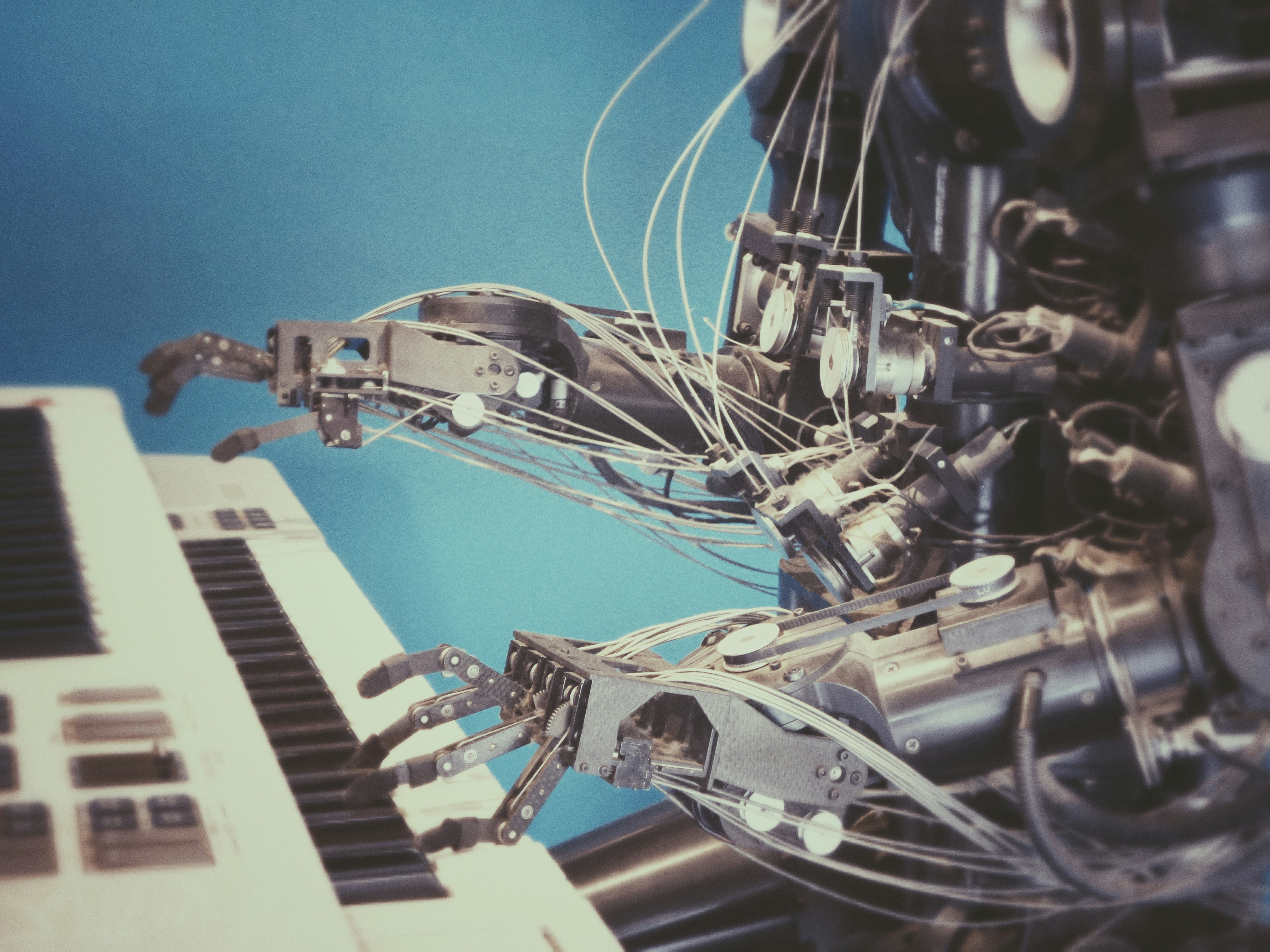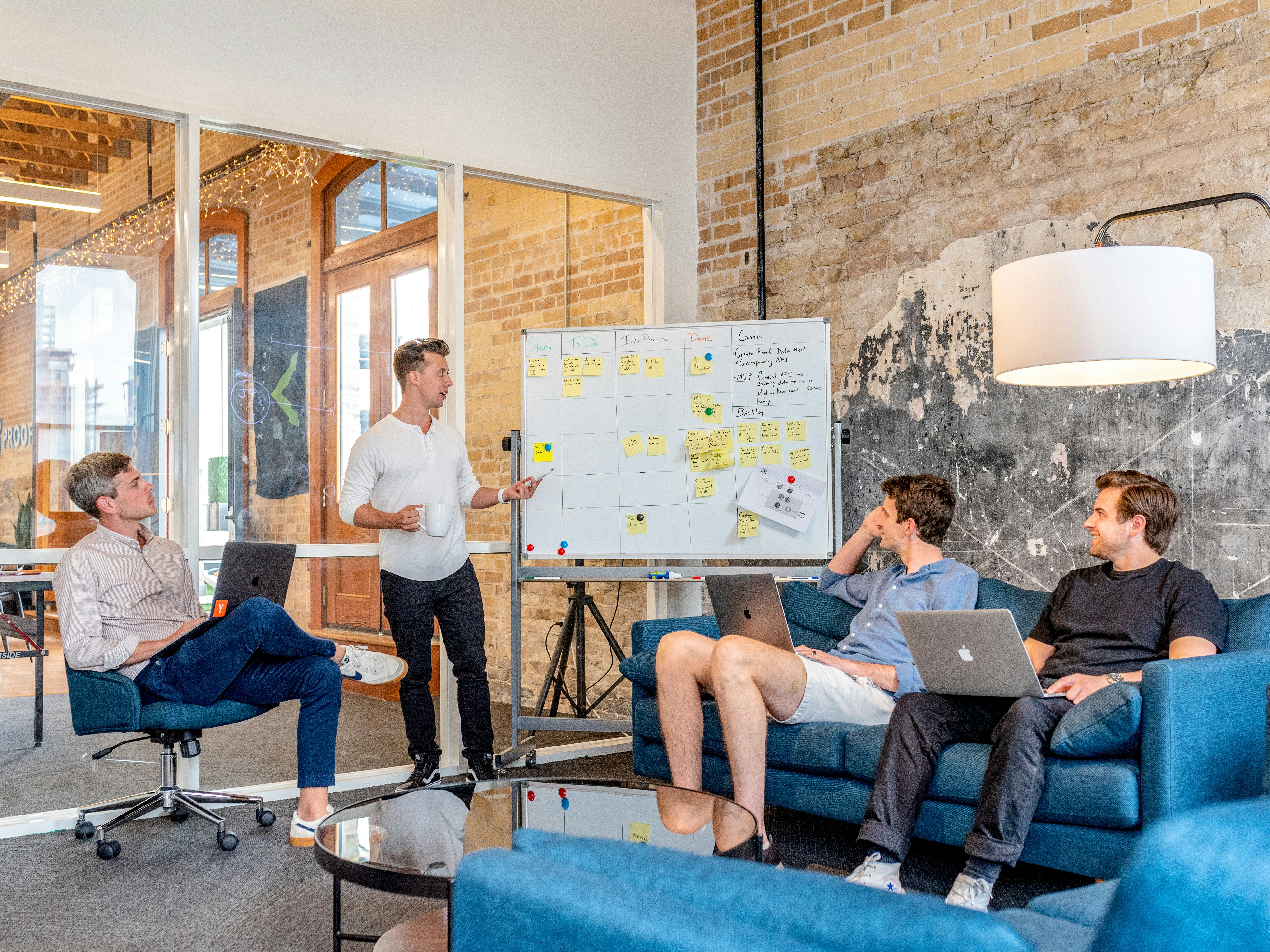
Graph Representation Learning: Career Opportunities and Job Trends in Machine Learning – Find Your Next ML Job in the UK
As the world becomes increasingly interconnected, understanding and analysing complex networks is more critical than ever. Whether it’s social networks, biological systems, transport networks, or the vast web of data on the internet, graphs are a powerful tool for representing relationships and interactions. Traditional machine learning techniques have excelled in handling structured data like images and text, but graphs present a unique challenge due to their irregular structure. Enter Graph Representation Learning (GRL), a transformative approach that bridges the gap between graph theory and machine learning, enabling us to extract meaningful patterns and make predictions from graph data.
In this article, we’ll explore the fundamentals of Graph Representation Learning, its applications across various domains, and why it’s becoming an essential skill in the job market. We’ll also provide insights into the career opportunities available in this exciting field, particularly for those seeking jobs in the UK. Whether you're a data scientist, machine learning engineer, or just starting your career in GRL, this guide will help you navigate the job landscape in this rapidly growing field.
What is Graph Representation Learning?
Graph Representation Learning (GRL) is a subfield of machine learning that focuses on learning vector representations (also known as embeddings) of nodes, edges, or entire graphs. These embeddings capture the structural properties of the graph and its components in a low-dimensional space, making it easier to apply traditional machine learning algorithms to graph-based problems.
Unlike traditional data, graphs consist of nodes (which represent entities) and edges (which represent relationships between entities). The challenge with graphs is that their structure is not fixed—nodes can have varying numbers of connections, and the arrangement of these connections can significantly impact the information the graph conveys.
GRL techniques aim to learn embeddings that preserve the inherent structure of graphs while also making them suitable for tasks like node classification, link prediction, clustering, and graph classification.
Core Concepts in Graph Representation Learning
To understand GRL, it’s essential to grasp some core concepts that form the foundation of this field:
1. Graph Types and Structures
Graphs can vary significantly in their structure and properties:
Undirected vs. Directed Graphs: In undirected graphs, edges have no direction, implying a mutual relationship between nodes. Directed graphs, on the other hand, have edges with a specific direction, representing asymmetric relationships.
Weighted vs. Unweighted Graphs: In weighted graphs, edges carry weights, which can represent the strength or capacity of the connection. Unweighted graphs treat all connections equally.
Homogeneous vs. Heterogeneous Graphs: Homogeneous graphs consist of a single type of node and edge, while heterogeneous graphs have multiple types of nodes and edges, common in real-world applications.
2. Node Embeddings
Node embeddings are vector representations of the nodes in a graph. The goal of node embedding algorithms is to map nodes to a continuous vector space where similar nodes (in terms of graph structure) are close together. Popular node embedding techniques include:
DeepWalk: This technique uses random walks on the graph to learn node representations, treating the sequence of nodes visited during the walk as sentences in a language model.
Node2Vec: An extension of DeepWalk, Node2Vec introduces a flexible random walk strategy that allows for a more nuanced exploration of the graph.
Graph Convolutional Networks (GCNs): GCNs extend the idea of convolutional neural networks to graph data, allowing for the aggregation of information from a node’s neighbours to learn better embeddings.
3. Edge Embeddings
Edge embeddings represent the connections between nodes. These embeddings can be derived directly from node embeddings or learned separately. Applications like link prediction—where the goal is to predict the existence of edges between nodes—rely heavily on edge embeddings.
4. Graph-Level Embeddings
In some cases, we need to generate embeddings for entire graphs rather than individual nodes or edges. This is particularly useful in tasks like graph classification, where we want to categorise entire networks. Techniques like Graph Neural Networks (GNNs) and Graph Attention Networks (GATs) have been developed to create graph-level embeddings by aggregating information from all nodes and edges in the graph.
Applications of Graph Representation Learning
Graph Representation Learning has a wide range of applications across various industries. Here are some key areas where GRL is making a significant impact:
1. Social Network Analysis
Social networks are perhaps the most intuitive example of graph structures. GRL can be used to identify communities within networks, detect influential nodes (influencers), and predict the formation of new connections. Companies like Facebook and LinkedIn use GRL to enhance their friend recommendation systems and target advertising.
2. Recommender Systems
Recommender systems can be modelled as graphs where users and items are nodes, and edges represent interactions (e.g., a user purchasing an item). GRL helps in generating personalised recommendations by learning user and item embeddings that capture their preferences and interactions.
3. Drug Discovery and Bioinformatics
In bioinformatics, GRL is used to model complex biological networks, such as protein-protein interaction networks, gene regulatory networks, and molecular structures. By learning representations of these networks, researchers can predict the effects of drugs, identify potential drug targets, and understand disease mechanisms.
4. Fraud Detection
Financial transactions can be represented as graphs, where nodes are entities (e.g., customers, accounts) and edges represent transactions. GRL techniques can be applied to detect fraudulent patterns by identifying anomalous subgraphs or suspicious node behaviours.
5. Natural Language Processing (NLP)
In NLP, GRL is used to model the semantic relationships between words, sentences, or documents. Graph-based representations like knowledge graphs can be embedded to enhance tasks like information retrieval, sentiment analysis, and question answering.
6. Transport and Logistics
Transport networks, such as road networks or airline routes, can be effectively modelled as graphs. GRL is applied in optimising routes, predicting traffic patterns, and improving supply chain logistics by understanding the complex interactions within these networks.
Tools and Frameworks for Graph Representation Learning
The growing interest in GRL has led to the development of various tools and frameworks that make it easier for practitioners to implement and experiment with graph-based models. Some popular tools include:
DGL (Deep Graph Library): DGL is a Python package built on top of popular deep learning frameworks like PyTorch and TensorFlow. It provides a range of functionalities for building and training graph neural networks.
PyTorch Geometric: This library extends PyTorch to support deep learning on irregularly structured data, including graphs. It includes implementations of many popular GRL algorithms, such as GCNs and GATs.
Graph Tool: A Python library focused on efficient manipulation and analysis of large graphs. It offers a wide range of algorithms for statistical analysis and visualisation of graphs.
NetworkX: A popular library for creating, manipulating, and studying complex networks in Python. While more focused on graph theory, it integrates well with GRL tools for pre-processing and analysis.
Career Opportunities in Graph Representation Learning
Graph Representation Learning is a rapidly growing field with a wide range of career opportunities, particularly in the UK, where companies and research institutions are increasingly investing in this technology. Below are some potential career paths for those interested in GRL:
1. Data Scientist/Engineer
Data scientists and engineers specialising in GRL are in high demand. These professionals work on applying GRL techniques to solve complex problems in various industries, from finance to healthcare. Familiarity with graph algorithms, GRL frameworks, and programming languages like Python is essential for this role.
2. Machine Learning Engineer
Machine learning engineers with expertise in GRL are responsible for designing, building, and deploying machine learning models that can handle graph data. This role requires strong programming skills, experience with deep learning frameworks, and a deep understanding of graph theory. In the UK, companies ranging from tech giants to innovative startups are actively seeking machine learning engineers who can bring advanced GRL techniques to their projects.
3. Research Scientist
Research scientists focus on advancing the state-of-the-art in graph algorithms, developing new GRL methods, and exploring their applications across various domains. A PhD in computer science, applied mathematics, or a related field is often required for this role. The UK is home to several world-renowned universities and research institutions, making it an ideal location for those looking to pursue a career in GRL research.
4. Bioinformatics Specialist
In the bioinformatics field, specialists with GRL skills work on modelling biological networks and applying machine learning to understand complex biological processes. This role often requires a background in biology, bioinformatics, or computational biology, combined with expertise in GRL. The UK’s strong healthcare and life sciences sectors offer ample opportunities for bioinformatics specialists with a focus on GRL.
5. NLP Engineer
NLP engineers use GRL to enhance natural language understanding by modelling semantic relationships within texts as graphs. This role involves working with knowledge graphs, embeddings, and graph-based neural networks to improve NLP applications. With the UK’s vibrant tech scene and growing number of AI-driven companies, NLP engineers with GRL expertise are in high demand.
6. Consultant
Consultants with GRL expertise help companies across various industries implement graph-based solutions. This role requires not only technical knowledge but also strong communication skills to convey complex ideas to non-technical stakeholders. In the UK, consulting firms and large enterprises often seek experts who can guide them through the integration of advanced machine learning techniques like GRL.
Educational Pathways and Resources
If you’re interested in pursuing a career in Graph Representation Learning, there are several educational pathways and resources available:
1. Formal Education
Pursuing a degree in computer science, data science, or applied mathematics with a focus on machine learning and graph theory provides a strong foundation. Many UK universities now offer specialised courses and research opportunities in GRL, making it easier for students to gain the knowledge and skills needed to excel in this field.
2. Online Courses and Tutorials
Numerous online platforms offer courses on GRL and related topics, which are great for both beginners and experienced professionals looking to upskill:
Coursera: Offers courses on Graph Neural Networks, machine learning with graphs, and deep learning specialisations that include GRL modules.
edX: Provides courses on graph theory and its applications in data science.
Udacity: Features nano-degree programmes in machine learning that cover advanced topics like GRL.
3. Books and Research Papers
Reading seminal books and research papers is crucial for staying updated with the latest advancements in GRL. Key books include "Deep Learning on Graphs" by Yao Ma and Jiliang Tang, and "Graph Representation Learning" by William L. Hamilton. These resources are particularly valuable for those aiming to specialise in GRL or pursue research in the field.
4. Workshops and Conferences
Attending workshops and conferences focused on GRL, such as the Conference on Neural Information Processing Systems (NeurIPS) or the International Conference on Learning Representations (ICLR), provides opportunities to learn from and network with experts in the field. The UK hosts several AI and data science conferences where GRL is a significant topic of discussion.
FAQs on Graph Representation Learning
1. What is the difference between Graph Representation Learning and Graph Theory?
Graph Theory is a branch of mathematics that studies the properties of graphs, focusing on the theoretical aspects of graphs such as connectivity, paths, and cycles. Graph Representation Learning, on the other hand, is a subfield of machine learning that uses the principles of graph theory to create vector representations (embeddings) of graph components for use in machine learning tasks.
2. How is Graph Representation Learning different from traditional machine learning?
Traditional machine learning typically works with structured data like images or text, where the data is represented in fixed-size arrays or matrices. GRL, however, deals with graphs, which have a flexible structure where the number of connections (edges) can vary significantly. GRL techniques are designed to handle this irregular structure and extract meaningful patterns.
3. What programming languages are most commonly used in Graph Representation Learning?
Python is the most commonly used programming language in GRL, thanks to its rich ecosystem of libraries and frameworks like PyTorch Geometric, DGL, and NetworkX. R is also used in some contexts, particularly for statistical analysis of graphs.
4. Can Graph Representation Learning be applied to time-series data?
Yes, GRL can be extended to time-series data through dynamic graphs, where nodes and edges change over time. This is particularly useful in scenarios like social networks, where connections between users evolve.
5. What industries are currently leading the adoption of Graph Representation Learning?
Industries such as social media, e-commerce, finance, healthcare, and logistics are leading the adoption of GRL. These sectors deal with complex networks of interactions, making GRL an invaluable tool for analysis and decision-making.
6. Is there a demand for Graph Representation Learning skills in the UK?
Yes, there is a growing demand for professionals with GRL skills in the UK, particularly in tech hubs like London, Manchester, and Edinburgh. Companies in these regions are increasingly looking for experts to help them unlock the potential of graph data.
7. How do Graph Neural Networks (GNNs) differ from traditional Neural Networks?
GNNs are designed specifically to work with graph-structured data. While traditional neural networks operate on fixed-size inputs (like images), GNNs can handle the flexible structure of graphs by aggregating information from neighbouring nodes, allowing them to learn representations that respect the graph's topology.
8. Are there any prerequisites for learning Graph Representation Learning?
A solid foundation in mathematics (especially linear algebra and graph theory), familiarity with machine learning concepts, and proficiency in programming (particularly Python) are important prerequisites for learning GRL.
9. How does Graph Representation Learning relate to Artificial Intelligence (AI)?
GRL is a component of AI, particularly within the field of machine learning. It enables AI systems to understand and make predictions based on graph-structured data, which is critical for tasks like recommendation systems, fraud detection, and social network analysis.
10. What are the challenges of working with Graph Representation Learning?
Challenges include dealing with the scalability of large graphs, handling dynamic changes in graphs, and ensuring that the learned representations are interpretable. Additionally, implementing GRL models can be computationally intensive, requiring specialised knowledge and tools.
Conclusion
Graph Representation Learning is an exciting and rapidly evolving field that offers a wealth of opportunities for those with the right skills and knowledge. As graphs become an increasingly important data structure across industries, the demand for professionals who can unlock the potential of graph data is set to grow. Whether you’re a data scientist, machine learning engineer, or researcher, specialising in GRL can open doors to cutting-edge projects and career advancement.
For those in the UK, the rise of tech hubs in cities like London, Manchester, and Edinburgh makes it an ideal location to pursue a career in this field. With the right educational background and hands-on experience, you can position yourself at the forefront of this technological revolution.
Ready to take the next step in your machine learning career? Explore open Graph Representation Learning jobs in the UK at www.machinelearningjobs.co.uk today!


